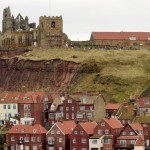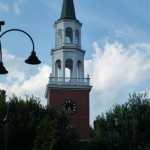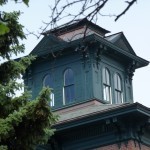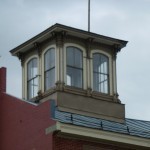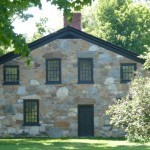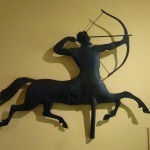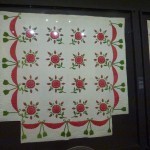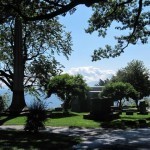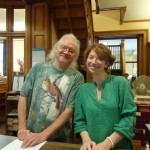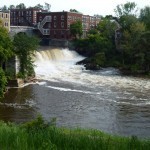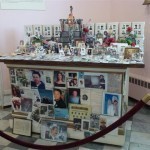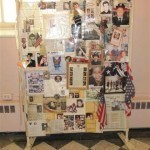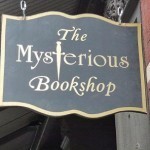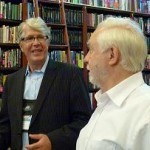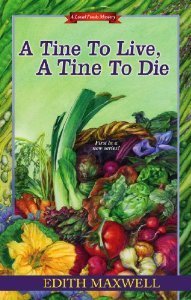Connie Archer's Blog, page 8
October 30, 2013
When the Dead Rise
 A Broth of Betrayal opens with a very old crime — the murder of a Revolutionary War militiaman whose body is discovered in present day Snowflake, Vermont. I needed to do some research on what the skeleton of a young Caucasian male would look like after more than two hundred years in the ground and how exactly the experts would go about discovering who this young man had been. The authorities were aided of course by some personal possessions including a powder horn carved with the man’s name (a little literary license here) but I still needed to describe how those bones might appear.
A Broth of Betrayal opens with a very old crime — the murder of a Revolutionary War militiaman whose body is discovered in present day Snowflake, Vermont. I needed to do some research on what the skeleton of a young Caucasian male would look like after more than two hundred years in the ground and how exactly the experts would go about discovering who this young man had been. The authorities were aided of course by some personal possessions including a powder horn carved with the man’s name (a little literary license here) but I still needed to describe how those bones might appear.
I learned a lot: With an intact adult skeleton, it’s easily possible to determine sex, age and height. After puberty, specific gender changes take place. The diameter of the head of the humerus (upper arm bone) and radius (lower arm) and femur (thigh bone) are larger in males than females. Growth changes in the long bones of the legs and arms can easily determine if a body is younger than twenty-five.
The pelvis and sciatic notch is wider in females than males and the rear of the public bone may have pitting or scarring from the tearing and regrowth of ligaments during and after childbirth. Ribs are smooth and rounded in youth, but become sharp and pitted with age. Thicker muscles can indicate whether a person was right or left handed. Height can be easily determined. A person’s height is generally five times the length of their humerus bone. Age estimates are more accurate for younger bodies because children’s teeth and bones follow very predictable growth patterns, but even so, age can be determined to within five to ten years.
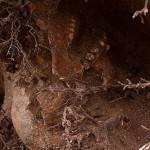 I did some web surfing to see if other ancient bodies might have resurfaced. I found nothing! At least nothing about two hundred year old bodies. But then, months after the manuscript had been submitted to the publisher, I was delighted to discover some news articles. Just as in A Broth of Betrayal, a skull and other bones were found by a passerby on Halloween, no less, in the roots of an oak tree felled in New Haven, Connecticut during Superstorm Sandy.
I did some web surfing to see if other ancient bodies might have resurfaced. I found nothing! At least nothing about two hundred year old bodies. But then, months after the manuscript had been submitted to the publisher, I was delighted to discover some news articles. Just as in A Broth of Betrayal, a skull and other bones were found by a passerby on Halloween, no less, in the roots of an oak tree felled in New Haven, Connecticut during Superstorm Sandy.
New Haven’s two hundred year old skeleton is female. She was a probable victim of yellow fever or smallpox and was likely buried between 1799 and 1821. You can read about New Haven’s Halloween skeleton here.
And then, in January 2013, on an even more ghoulish note, articles appeared in the Huffington Post and NBC reporting that a landslip and erosion had exposed layers of human remains from the graves at St. Mary’s Cemetery in Whitby, North Yorkshire, England.
 Dracula fans will recall that Whitby was the town in which Bram Stoker lived for a time and which he used as the English setting for his famous vampire story.
Dracula fans will recall that Whitby was the town in which Bram Stoker lived for a time and which he used as the English setting for his famous vampire story.
Whitby Abbey is a suitably haunted site. The abbey was established in 647 A.D. and overlooks the North Sea on the East Cliff above Whitby in North Yorkshire, England. Today Whitby is still a mecca for Dracula fans hoping to find the final resting place of the fictional Count.
How surprising and gratifying it was to see real life imitating events in Snowflake, Vermont!
October 20, 2013
Searching for Snowflake
The soup lover’s mystery series is set in the imaginary village of Snowflake, Vermont. Needless to say, I’ve spent an awful lot of time in that village . . . in my mind . . . and I can only hope the village I’ve created for readers lives in their imaginations as well.
This su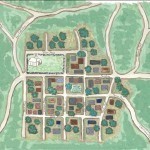 mmer, I decided to go searching for Snowflake and all the things that might exist there – village greens, white steepled churches, small shops and restaurants, gingerbread houses and all those elements that create the charm of small New England towns.
mmer, I decided to go searching for Snowflake and all the things that might exist there – village greens, white steepled churches, small shops and restaurants, gingerbread houses and all those elements that create the charm of small New England towns.
Did I actually find Snowflake? Well, not exactly. I found many of the things I’ve imagined and remembered from growing up in New England, but more importantly, I discovered so many other beautiful places and met a lot of welcoming people. Here are some memories of that trip:
Flying into Burlington Airport from JFK was the first surprise.
An absence of crowds, signs in English and French and an airport filled with rocking chairs!
 Burlington sits on the shores of Lake Champlain. Via the Champlain Canal, it’s possible to travel from the St. Lawrence Seaway in Quebec to the Hudson River and New York Harbor. This strategic waterway was the scene of several important battles against the British during the Revolutionary War and the War of 1812.
Burlington sits on the shores of Lake Champlain. Via the Champlain Canal, it’s possible to travel from the St. Lawrence Seaway in Quebec to the Hudson River and New York Harbor. This strategic waterway was the scene of several important battles against the British during the Revolutionary War and the War of 1812.

 The lake was named after the French explorer Samuel de Champlain, who came upon it in 1609. Champlain also claimed that he spotted a monster five feet long, a creature with silver scales that “a dagger could not penetrate” and jaws with sharp and dangerous teeth. Native Americans also claim to have seen similar
The lake was named after the French explorer Samuel de Champlain, who came upon it in 1609. Champlain also claimed that he spotted a monster five feet long, a creature with silver scales that “a dagger could not penetrate” and jaws with sharp and dangerous teeth. Native Americans also claim to have seen similar 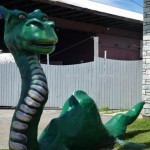 monsters, some as long as eight to ten feet. Vermont’s lake monster, named Champ (that’s Champ with a French pronunciation) still receives considerable attention. A replica is on display near the shore.
monsters, some as long as eight to ten feet. Vermont’s lake monster, named Champ (that’s Champ with a French pronunciation) still receives considerable attention. A replica is on display near the shore.
 For a very reasonable fare, it’s possible
For a very reasonable fare, it’s possible 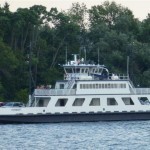 to commute back and forth across the lake from Vermont to New York on ferries.
to commute back and forth across the lake from Vermont to New York on ferries.
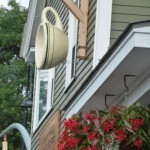 In town, Church Street is a
In town, Church Street is a  promenade of shops and restaurants.
promenade of shops and restaurants.
Church Street leads to a white steepled church from which the street derives its name.
My first stop was at Phoenix Books in Burlington.
[image error]Phoenix Books is at 191 Bank Street
Burlington, VT 05401
T: (802) 448-3350
A second branch of Phoenix Books can be found at Essex Junction. It’s a wonderful store and if you’re in the area, stop by to browse or visit them online at www.phoenixbooks.biz.
Tod Gross, the store manager, was there the  day I arrived. I was thrilled to discover they were carrying the soup lover’s mystery books and I was able to sign my books!
day I arrived. I was thrilled to discover they were carrying the soup lover’s mystery books and I was able to sign my books!
Here’s Tod . . .
Tod led me to a display of Archer Mayor books, a well known Vermont author. I had been meaning to check out Mayor’s series for a long time and this was the perfect opportunity. I picked up a copy of Open Season and loved it. I hope to read all the rest of Mayor’s books in the near future.
A huge highlight of my visit to Burlington was actually getting to meet and have lunch with Melissa La Pierre, whose blog, Melissa’s Mochas Mysteries and More, hosted me for one of my first guest blogs, aptly named “Creating Snowflake.”
And then earlier this year, Melissa was kind enough to host my blog on The Missing of Vermont.
Melissa’s a life long Vermonter who was excited to learn of a village mystery series set in Vermont. We had a great time chatting but our lunch ended all too soon. I felt I made a friend and I know we’ll stay in touch in the future!
Driving through other towns, I found village greens, white steepled churches and lots of streets named after trees, just like the streets in Snowflake — Spruce, Maple, Elm, Birch and Chestnut.
And I was excited to see a lot of unique widow’s walks, by the lake and even inland. I posted a 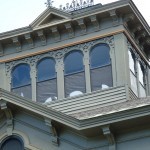 blog several months ago about other widow’s walks I’ve found in my travels.
blog several months ago about other widow’s walks I’ve found in my travels.
Here are a few more I found in Vermont
Just south of Burlington is the town of Shelburne. In 1947, a former resident, Electra Havemeyer Webb. founded the Shelburne Museum to house her collections:
Folk Art
 At this sprawling indoor/outdoor museum, you can view priceless works of Impressionist art, the steamship Ticonderoga, completely restored down to the last detail, carriages, costumes, circus figures, quilts, weathervanes, pewter, china, and early American furniture, to mention just a few categories.
At this sprawling indoor/outdoor museum, you can view priceless works of Impressionist art, the steamship Ticonderoga, completely restored down to the last detail, carriages, costumes, circus figures, quilts, weathervanes, pewter, china, and early American furniture, to mention just a few categories.
Shelburne Museum
6000 Shelburne Road
P.O. Box 10
Shelburne, VT 05482
802-985-3346
In Burlington, a ten minute uphill hike  leads to the Ethan Allen Tower with views of the Green Mountains, the Adirondacks and Lake Champlain. The site is maintained by the Tower Keypers, area residents who keep watch over the park and lock and unlock the Tower daily.
leads to the Ethan Allen Tower with views of the Green Mountains, the Adirondacks and Lake Champlain. The site is maintained by the Tower Keypers, area residents who keep watch over the park and lock and unlock the Tower daily.
No visit to a New England town is complete without a walk through a local cemetery.
Lakeview Cemetery is at the town’s new North End. 
The Victorian Gothic Louisa Howard Chapel opened to the public in 1872 and is available for memorial services, weddings and other public gatherings.
 Next stop was Montpelier, the smallest state capital in the United States.
Next stop was Montpelier, the smallest state capital in the United States.
One of my other goals on this trip was to say hello to Gwen Roolf of Montpelier who allowed me to use her amazing photos of the town for my website. You can find several of them on my website.
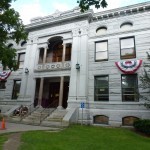 The Kellogg Hubbard Library is located at 135 Main Street, Montpelier VT. You can view their events online at http://www.kellogghubbard.org/.
The Kellogg Hubbard Library is located at 135 Main Street, Montpelier VT. You can view their events online at http://www.kellogghubbard.org/.
I was lucky enough to catch Gwen there. Here’s Gwen with her friend George at the library.


And here are more pictures of this wonderful building.
Montpelier is a delightful town. Everywhere I went I saw another photo opportunity. These hearts in a window caught my eye.
And more hearts on a tower:
Then, it was on to Stowe via Smuggler’s Notch, a very narrow passage at the top of the mountain.
Here’s a shot of a ski run sans snow, 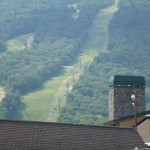 just like the Snowflake Resort.
just like the Snowflake Resort.
At Middlebury, I discovered the impressive Otter Creek Falls.
There is a river near Snowflake, but I couldn’t help wondering why I didn’t think of giving Snowflake its very own falls.
 And of course, window
And of course, window
shopping . . . .
The week was coming to a close. I was happy  to be heading home, but sad to leave Vermont and Lake Champlain with all its changing moods.
to be heading home, but sad to leave Vermont and Lake Champlain with all its changing moods.
Did I find my Snowflake? Not exactly, but I found elements of Snowflake wherever I traveled. Best of all, I’ll savor my photos and memories for a long time to come.
September 10, 2013
September 11th
St. Paul’s Chapel at 209 Broadway in Lower Manhattan is the oldest surviving church in the city. 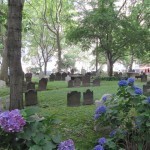
First opened in 1764, it survived the great fire of 1776 that destroyed most of New York at that time. George Washington worshiped at St. Paul’s on his inauguration day in 1789 and for the two years that New York was the nation’s capital.
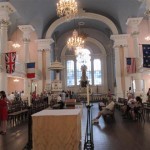 On September 11th, St. Paul’s, only a city block from the World Trade Center, once again escaped destruction, without even a broken window.
On September 11th, St. Paul’s, only a city block from the World Trade Center, once again escaped destruction, without even a broken window.
For eight months the Chapel was manned by
volunteers who provided aid and refuge
to the recovery workers at Ground Zero. 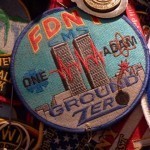
Inside the Chapel are photos and letters from around the world — heart wrenching memorials to those who died and served on September 11th.
August 20, 2013
Early New England Food
Connie talks about early New England food and what the Pilgrims ate, plus one of her favorite recipes at Killer Crafts and Crafty Killers.
August 5, 2013
Thrillerfest
Thrillerfest is over but the memories linger on . . .
One fantastic highlight was a trip to The Mysterious Bookshop organized by Jenny Milchman, and accompanied by Doug Preston, for the Debut Authors of 2013.
If you look closely you can see Jenny in the middle of this picture.
We explored the shop and were introduced to the famous Otto Penzler who came out to welcome us. I could have easily spent days there, but time was short and we eventually headed back to the conference.
Next time I’m in Manhattan, this will be my first stop.
June 13, 2013
New England’s Heroes
Connie is a guest at the Wicked Cozy Authors site. She’s blogging about Vermont’s heroes of World War II.
May 24, 2013
A Winner!
Congratulations to Jackie Houchin!
Jackie is the lucky winner of Edith Maxwell’s A Tine to Live, A Tine to Die.
Thanks to everyone who participated and left a comment!
May 21, 2013
New England Food
I’m really happy to welcome Edith Maxwell to my blog today! Edith writes the local foods mystery series, and, as Tace Baker, Speaking of Murder, featuring linguistics professor Lauren Rousseau. She’s offering a giveaway today of A Tine to Live, A Tine to Die to one lucky person who leaves a comment.
Thanks so much, Connie, for having me over! I want to share my impressions of New England food. I’m a fourth-generation Californian, but have now lived longer in Massachusetts than I ever did in Temple City, my quiet suburb of Los Angeles.
I love to cook and I love to eat locally produced food, so it was an easy fit to write a cozy mystery about murder on an organic farm north of Boston, especially since I once owned and operated a similar farm.
I think many non-New Englanders think first of clams, lobsters, maple syrup, and Boston Baked Beans when they think of local foods from this region. But for me what’s most special is that first mid-May taste of freshly picked asparagus after a long winter.
 A juicy June strawberry warmed by the sun. Crisp peapods on the Fourth of July (if you or your local farmer has planted them early enough). An ear of sweet corn in August picked minutes before and steamed just enough to warm the crunchy kernels. A local peach dripping with flavor made into a tart with plump blueberries. A crisp heirloom apple variety like Spartan. Brussels sprouts and carrots sweetened by the frost. None of the supermarket facsimiles even come close to matching the flavor of any of these local crops.
A juicy June strawberry warmed by the sun. Crisp peapods on the Fourth of July (if you or your local farmer has planted them early enough). An ear of sweet corn in August picked minutes before and steamed just enough to warm the crunchy kernels. A local peach dripping with flavor made into a tart with plump blueberries. A crisp heirloom apple variety like Spartan. Brussels sprouts and carrots sweetened by the frost. None of the supermarket facsimiles even come close to matching the flavor of any of these local crops.
 New England has real seasons. Southern California, not so much. Sunny and not so sunny. A little bit of rain vs. blistering heat. Orange blossoms and then smog. But when you’ve gone through the short dark days of late fall and December, frigid windy winter storms that dump three feet of must-be-shoveled snow, and the mud-season weeks of March, you rejoice in spring flowers and early mixed greens and you can’t wait for the first real tomato.
New England has real seasons. Southern California, not so much. Sunny and not so sunny. A little bit of rain vs. blistering heat. Orange blossoms and then smog. But when you’ve gone through the short dark days of late fall and December, frigid windy winter storms that dump three feet of must-be-shoveled snow, and the mud-season weeks of March, you rejoice in spring flowers and early mixed greens and you can’t wait for the first real tomato.
Mind you, I love the seasons. Fall makes you want to put on a sweater, light a fire, and knit with a hot toddy at your side. I’m a three-decade convert to the joys of cross-country skiing on sun-sparkled snow. And as I said, spring brings real joy. But it’s the intense summer growing season that makes it all worthwhile for a foodie, partly because you know it’ll be over so soon.
 We belong to a farm-share program at a small organic farm nearby. We also have the choice of selecting food from a big farm stand a mile away, a thriving weekly farmers’ market a few miles away, and my own backyard garden. From late May through October we buy very little at the grocery store: TP and paper towels, olives, crackers. We can get milk, eggs, cheese, meats, and all our fruits and vegetables locally. We even get coffee locally roasted, although of course it isn’t grown here.
We belong to a farm-share program at a small organic farm nearby. We also have the choice of selecting food from a big farm stand a mile away, a thriving weekly farmers’ market a few miles away, and my own backyard garden. From late May through October we buy very little at the grocery store: TP and paper towels, olives, crackers. We can get milk, eggs, cheese, meats, and all our fruits and vegetables locally. We even get coffee locally roasted, although of course it isn’t grown here.
Of course, if we ate exclusively locally, the winter and early spring would be pretty grim. Aging winter squash, sprouting potatoes, limp carrots, and lots of frozen, canned and fermented vegetables, fruits, and sauces. Not to mention no rice, no coffee, no chocolate, no olives. So I don’t go that far.
 My third book in the Local Foods Mysteries series takes place in the winter and I’ll be drafting its synopsis this summer. I wonder how the members of the Locavore Club enjoy what Cam Flaherty can produce on her farm during the cold months.
My third book in the Local Foods Mysteries series takes place in the winter and I’ll be drafting its synopsis this summer. I wonder how the members of the Locavore Club enjoy what Cam Flaherty can produce on her farm during the cold months.
Readers, what about you? Do you make an effort to eat locally? Can you even get local foods in your area? Is it all too expensive or too much trouble? If you’ve belonged to a CSA, did you enjoy your weekly share or did you find you just had too much kale for a person to tolerate?
[image error]
May 10, 2013
The Battle of Bennington
When I first started thinking about A Broth of Betrayal, the second book in the soup lover’s mystery series, I realized the village needed a break — it was time for a change in the weather. My original plan was spring. After all, A Spoonful of Murder had taken place in that chilling dead zone, the long days of winter yet to come after the holidays, and far too early for warm weather to arrive in Snowflake, Vermont. But I also wanted to choose a time when a festival or a celebration of some sort might be taking place. Originally, I thought of Patriot’s Day (April) but soon learned only those outliers in Massachusetts celebrate that particular holiday. In Vermont, the Battle of Bennington is remembered on August 16th.
Backtracking, I thought okay, summer’s great, heat waves and all that stuff and all sorts of things going on in the village underscored by the reenactment on Snowflake’s Village Green of the Battle. (I won’t tell you what happens when all the cheering stops, that would a spoiler.) So Lucky, her grandfather Jack, and all the other inhabitants of the town would have to suffer through the dog days of August.
The battle itself, one that was crucial in the ultimate defeat of British and Hessian forces, started at 3 o’clock in the afternoon on August 16, 1777. Just imagine those Brits and Hessians in their heavy wool uniforms struggling through an untamed forest in the heat — all the better for the colonists.

British General John Burgoyne
British General John Burgoyne, who held a very low opinion of New England’s militiamen, planned to capture Albany and then march south along the Hudson River Valley in an effort to divide the colonies in half. He was sure his plan would separate the rebellious New Englanders from those he believed more loyal in the south. Burgoyne was in desperate need of supplies and food to feed his army. His plan included raiding the countryside (i.e., pillaging the food, cattle and horses of the colonists) for provisions as he headed toward Bennington where he knew the colonists’ cache of ammunition and gunpowder was stored.The core of Burgoyne’s first march was comprised of Hessians, Tories, Canadians, Indians and English under the command of German Colonel Frederich Baum. When Baum learned that John Stark, an American general, had gathered a force of 1,500 troops at Bennington, he sent couriers to Burgoyne for reinforcements. But Stark, learning of Baum’s march, moved north to attack immediately.
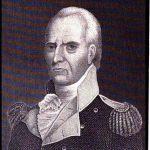
General John Stark
By 3 o’clock in the afternoon of August 16, 1777, Stark led the assault. According to legend, Stark said, “There are the Red Coats. They will be ours or tonight Molly Stark sleeps a widow.” The battle raged for several hours until Baum was mortally wounded and his demoralized troops offered surrender. Unfortunately for the American militia, Burgoyne had received Baum’s request for reinforcements and had sent a second unit of his army, commanded by Colonel Heindrich von Breymann. Stark was caught unaware and the battle raged on. The Americans fought back, but exhausted from the previous battle, began to lose ground. In the very nick of time, Colonel Seth Warner and his Green Mountains Boys arrived on the scene and the scales were soon tipped in the colonists’ favor. By sunset, Breymann’s troops were fleeing with the colonists in hot pursuit.
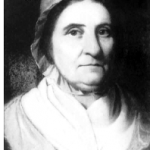
Molly Stark
The Battle of Bennington is remarkable in that mostly untrained Yankees defeated the best disciplined and equipped troops Europe had to offer. At the end of the day, a high percentage of Burgoyne’s army was dead, wounded or captured. The colonists’ supplies were saved and Burgoyne’s ambitious plan for a quick march throughNew York had been foiled. Two months later, on October 17, 1777, General John Burgoyne surrendered his entire command of 8,000 troops to the Americans.
April 17, 2013
Chasing Fairies
Connie talks about the creative process at Lori’s Cozy Wednesdays blog: Escape with Dolly Cas

